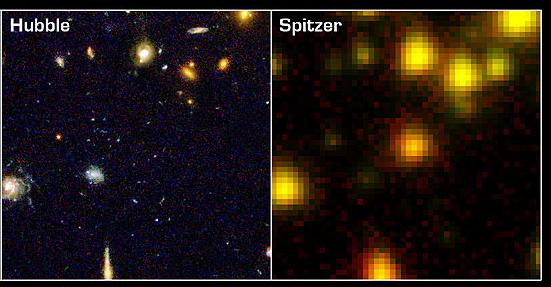Difference between revisions of "Galaxy Classification"
From CoolWiki
Jump to navigationJump to searchm |
m |
||
| Line 1: | Line 1: | ||
=Serendipitous finds= | =Serendipitous finds= | ||
| − | [[Image: | + | [[Image:Pn-gal.jpg]] |
Spitzer's cameras have relatively large fields of view (for infrared cameras), and Spitzer is really efficient at covering large areas of sky. Thus, it is often the case that sources are serendipitously imaged -- for example, galaxies caught in the background of an image of something else. You can do science with these objects! | Spitzer's cameras have relatively large fields of view (for infrared cameras), and Spitzer is really efficient at covering large areas of sky. Thus, it is often the case that sources are serendipitously imaged -- for example, galaxies caught in the background of an image of something else. You can do science with these objects! | ||
Revision as of 19:36, 31 October 2007
Serendipitous finds
 Spitzer's cameras have relatively large fields of view (for infrared cameras), and Spitzer is really efficient at covering large areas of sky. Thus, it is often the case that sources are serendipitously imaged -- for example, galaxies caught in the background of an image of something else. You can do science with these objects!
Spitzer's cameras have relatively large fields of view (for infrared cameras), and Spitzer is really efficient at covering large areas of sky. Thus, it is often the case that sources are serendipitously imaged -- for example, galaxies caught in the background of an image of something else. You can do science with these objects!
On the left is an example of just such an image. The picture is meant to be of the planetary nebula (original press release), but the galaxy in the upper right was caught by accident.
